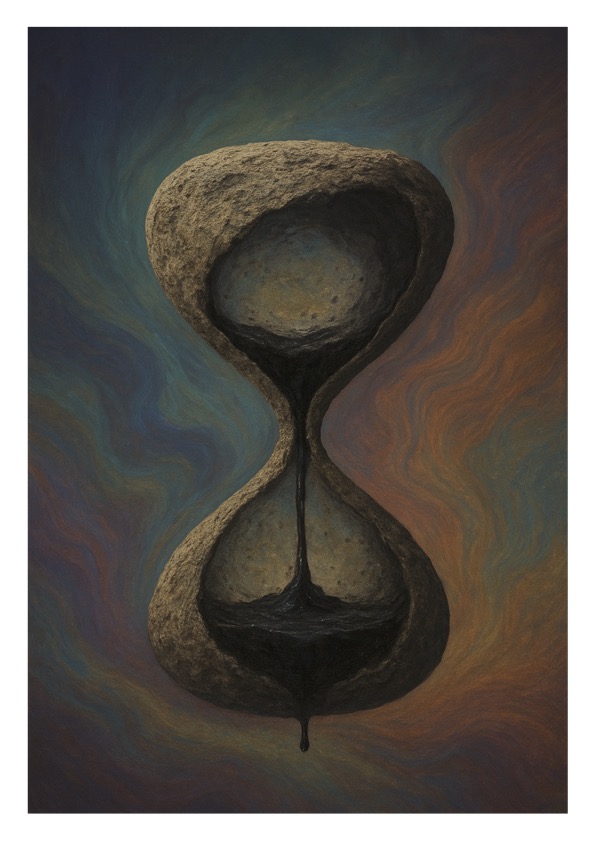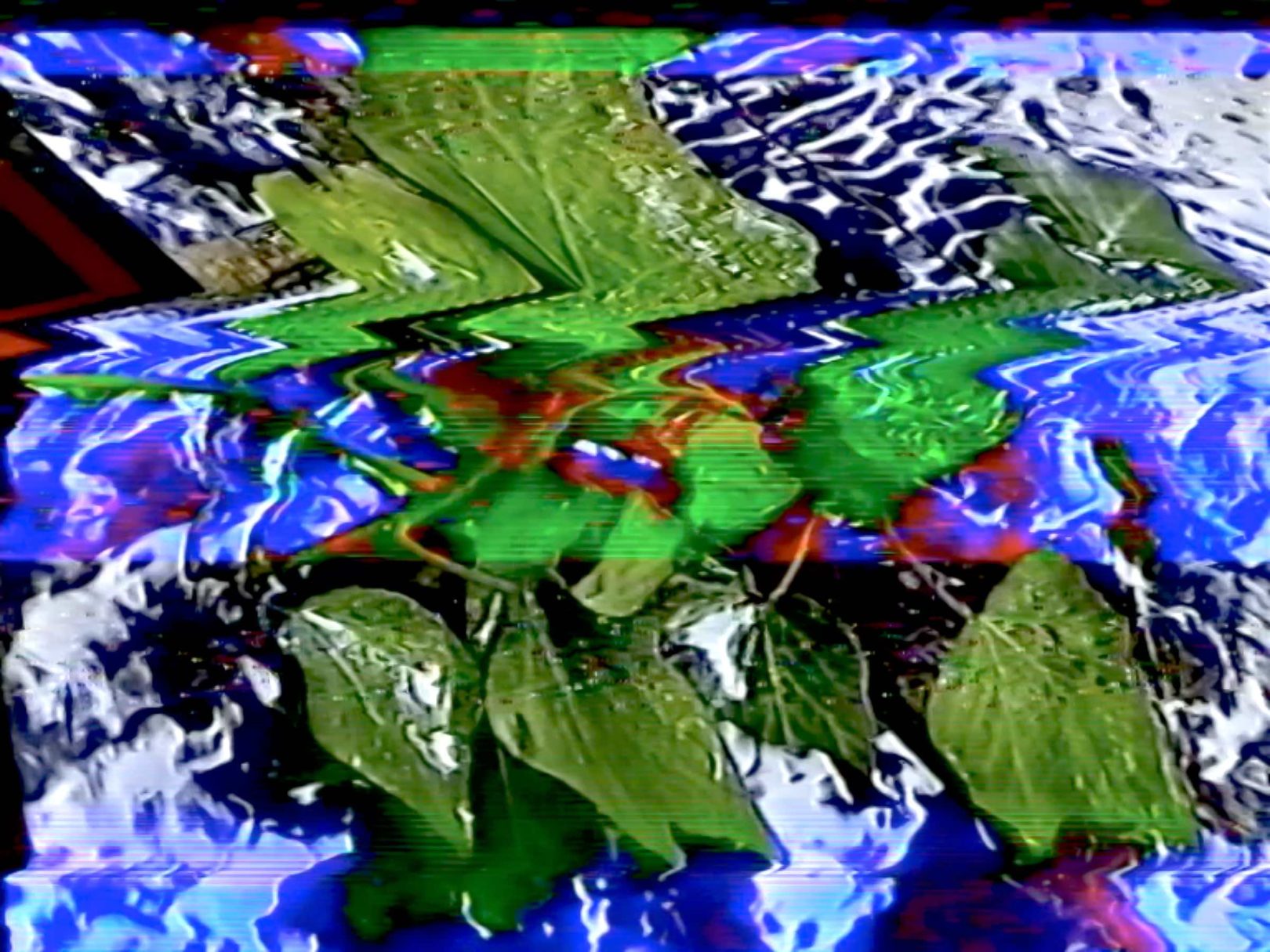The Fluid Earth Conference
A one long day conference about our Fluid Earth season and the many issues we have encountered and revealed. There will be contributions from many of the artists, reflecting on their work, and discussions about the wider implications and contexts.
Saturday morning will see an experimental workshop by Bridget McKenzie, founder of Climate Museum, exploring further some of the ideas in the context of the earth crisis, and looking at what it all means and how we can all contribute to deeper thinking and action.
(Feature image above, a still from Matt Green ‘Source Material’, video, 2025 – glitch ivy.)
Booking and Tickets
Book on Eventbrite here
Conference: £50 (NetWork Associates, £40)
Workshop: £15
Both together £55.00 (NetWork Associates, £45)
Fluid Earth conference programme outline
Friday November 21
At Thoresby College, Queen St, King’s Lynn, PE 30 1HX
10.00 – doors open. Coffee
Part One: Living with water.
How we can live in symbiotic relationships with water, who and what disrupts that, and what to do when systems break down? How can artists highlight pertinent issues & create an atmosphere for discussion and change?
10.45 Tim Holt-Wilson: Fluid Earth, an Introduction
11.00 – 11.40
Ann Jiang – symbiosis with water
Sue Brinkhurst – material displacement
Liz Ballard – flowing springs
11.40 – 12.10 Discussion
Part 2: River activism
Between community, politics, industry, art and culture. Creating different narratives and strategies to respond to pollution.
12.15. Chair: James Murray-White, film-maker
12.20 – 12.40
Oloche Johnson- Niger Delta (see Irregular Hourglass image & text, below)
Russell Biggs – Gaywood River
12.45 – 1.15
Discussion
1.15 – 2.15 Lunch (basic food provided but do bring your own packed lunch, or a pot-luck contribution, if you prefer)
Part Three: Edges / Ecotones
Considering the edges of different eco-systems, including borders of fields, forests, coastline and suburbs and the cultural comparisons, equivalents & metaphor. Looking at our compromised positions in relation to nature and how nature poses challenges.
2.15 Chair Nick Acheson, naturalist and writer
2.30 – 3.00
Louis Neale – Landscapes in flux
Michelle Wood – Responding to edge landscapes
Caroline Forward – Living on the Edge
3.00 – 3.15 Break
3.15 – 3.45
(CWxWC): Countermapping the Ecotone
Liz McGowan : Points of contact
3.45 – 4.15 Discussion
4.15 – 4.30 break
Part Four: Entanglements & Queer perspectives
Queer fluidity, fragmentation, imperfections. How does it look to take lateral perspectives on nature-culture- environment and pursue resistance to normatve logics? How can we move away from gendered and/or binary perspectives?
4.30 Fabia Pollard, chair, Contaminated land specialist
4.40- 5.15
Helen Kilbride
Matt Green
Rebecca Hearle
5.15 – 5.45 Final Panel Discussion
5.45 Closing words, VS
Followed by reception at GroundWork
6.15 drinks and exhibition viewing at GroundWork & see films by other artists who took part in the residency
Rosa Whiteley
Hilary Powell
Sean Savage Ferrari
Sabīne Šnē
Mahmood Pouyandeh
7.30 Finish
Saturday 22 Nov. 11-1
Bridget McKenzie
Workshop
How it all Connects
At Baum Studio, 32-33 Bridge St, PE30 5AB
Tickets £15
I am taking a deep dive into Earth system science – freshwater, saltwater, water in plants and bodies, how plants protect land from flooding and coastal erosion, how photosynthesis and carbon sinks contribute to climate action – how all of these connect and relate to our Norfolk landscape.
This workshop is an invitation to work alongside me, to play with different consistencies of ink, watercolour and ink pencils. You might try gum arabic, oil, wax, charcoal, pastel and homemade natural pigments in the mix too.
Irregular Hourglass by Isaac Oloche Johnson

‘This work embodies the paradox of Fluid Earth: land liquefied by oil, time disfigured, ecosystems calcified into relics. It is at once shrine, memorial, and warning. It refuses to be decorative; it is evidence, testimony, and a call to conscience.
‘I began with a simple photograph of an oil spill on water. In its negative space, I perceived an irregular hourglass silhouette like time running out in distorted form. The photograph became a muse, not because of its documentary truth, but because it revealed an underlying metaphor: time as oil, time
as ruin. The artwork is not a reproduction of the photo but an interpretive leap an hourglass born out of an oil reflection.
‘The hourglass is traditionally a symbol of time, balance, and inevitability.
In this piece, its irregular, rough-textured body breaks away from perfection evoking erosion, fossilization, and the fractured balance of the Niger Delta’s ecology. The black liquid (crude oil) replaces sand: instead of measuring life, it measures destruction. Instead of flowing gracefully, it seeps, coagulates, and stains. I translated the reflection’s fluid swirls into a surrealist background, letting them stand for the paradoxical beauty of oil pollution. I replaced the traditional sand with crude oil, to capture the truth that oil is not a measure of wealth but of irreversible loss.

